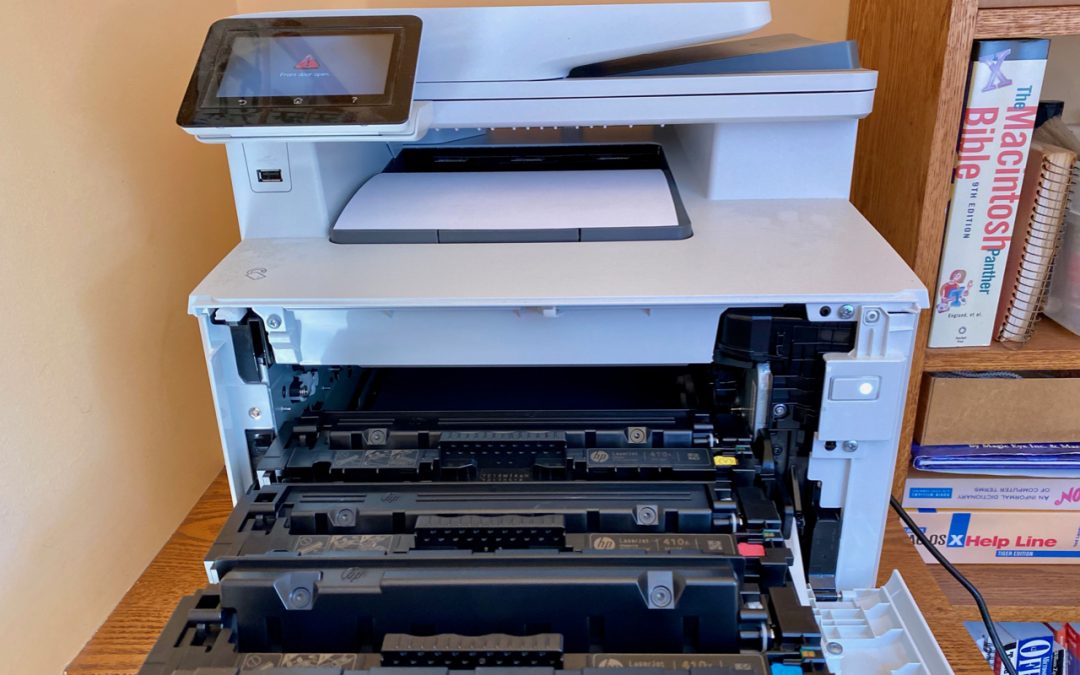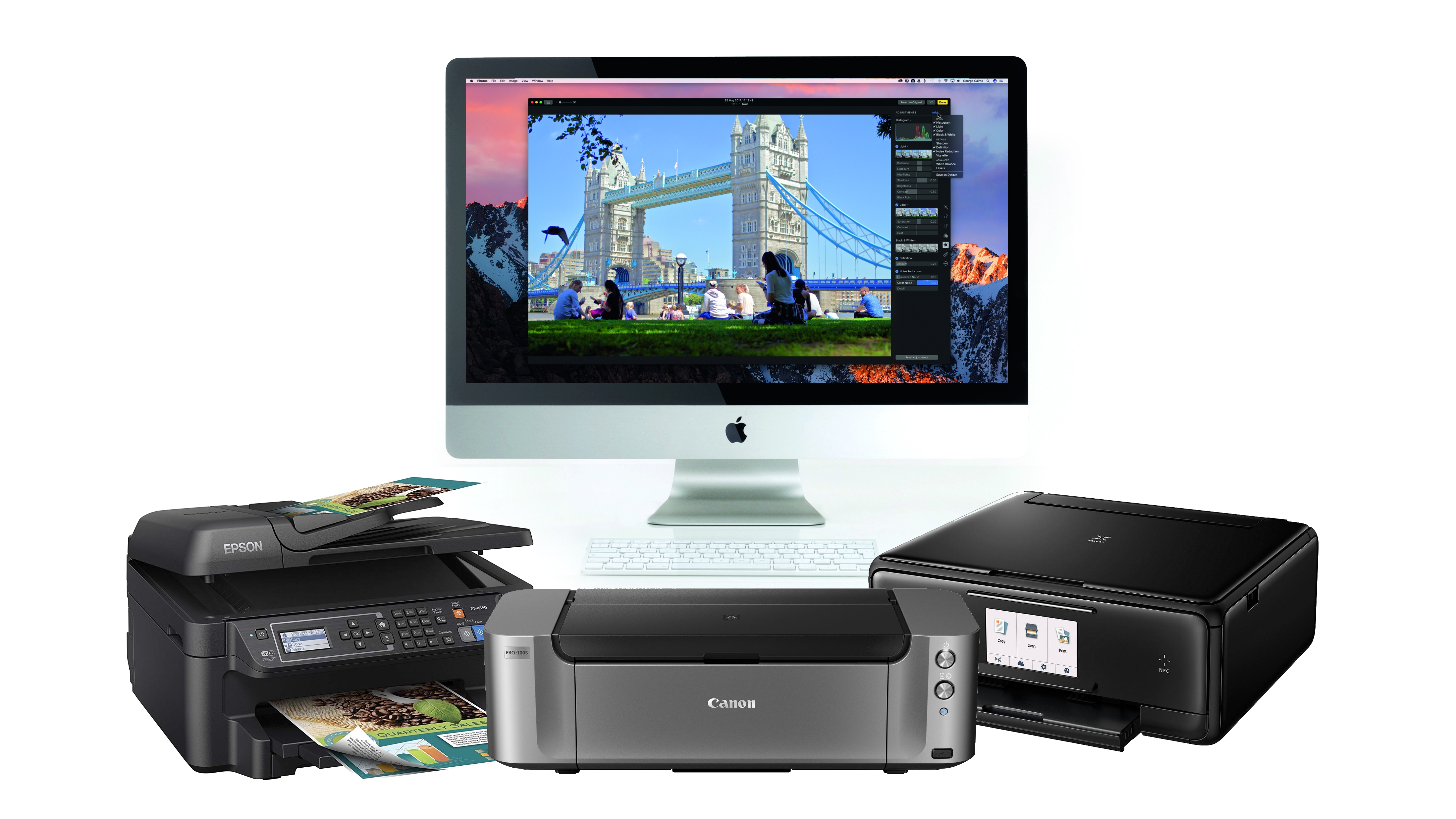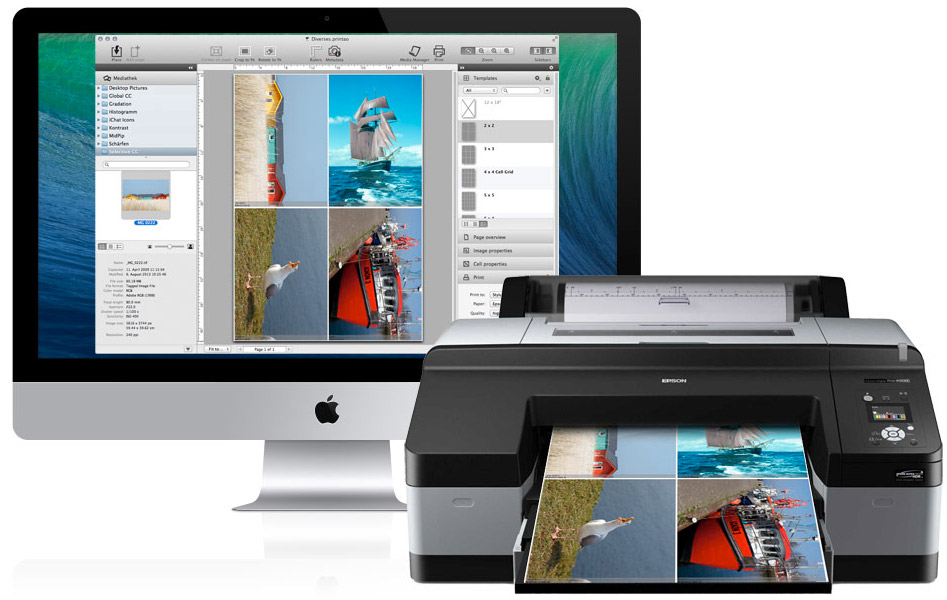Check to see if a driver or app is available to use your HP printer with a Mac computer or laptop. Note: On iOS and macOS, most HP printers work with Apple AirPrint to provide full-quality printing without the need to download or install drivers. Follow the steps below to enable Epson Connect for your Epson printer on a Mac. Important: Your product needs to be set up with a network connection before it can be set up with Epson Connect. If you need to set up the connection, see the Start Here sheet for your product for instructions.
The thought of setting up a printer intimidates most people. But once you know the steps, it’s fairly easy to do. Whether you just need to add one printer to your home computer, or lots of printers to a business network, here’s how to add a printer to a Mac desktop or laptop.
How to Connect a Wireless Printer to Mac
You can connect your printerwirelessly through a Wi-Fi Protected Set-up (WPS) or a Bluetooth connection.Follow the steps below depending on how you want to connect your printer.
How to Add a Printer to a Mac via WPS
Connecting via WPS would normallyrequire you to press the “Wireless” or ‘Wi-Fi” button on your printer, followedby the WPS button on your router. However, steps will vary depending on whichprinter and router you have, so check your printer and router user guides forspecific instructions. Once you’ve set up WPS, you can proceed to the stepsbelow.
- Click the Apple icon in the top-left corner your screen.
- Go to System Preferences.
- Click on Printers and Scanners. On older Mac models, this will appear as Print & Scan under Hardware.
- Click the + sign below the list of printers. For older Mac models, you might have to click Add Printer or Scanner after you click on the + sign. You might also see printers detected by your Mac under Nearby Printers in the Add Printer or Scanner submenu.
Note: If you cannot click on the + sign, you might have to click the Lock icon at the bottom of the window. Type on your password to make changes in the Print & Scan menu.
- Select the printer you would like to add. In the Default tab, your Mac displays a list of discoverable printers on the network.
- Choose the printer’s software or driver in the Use field. You can choose from the following:
- AirPrint, Apple’s native printing technology which lets you print from AirPrint-compatible printers via Wi-Fi on Airprint-compatible printers. However, if your printer is not AirPrint-compatible, you would need to install the driver from Apple’s servers or the manufacturer’s website.
- Your printer’s own print driver, if you have that installed
- Auto Select if you don’t have the print driver but you want your computer to download the correct one when it updates
- Finally, click Add. The new printer will be added to the list of printers. You will be able to see this on the left-hand side of the Print & Scan window.
How to Add a Printer to Mac via USB
Printers that do not have networkingcapabilities can only be added through a USB or wired connection. Someprinters, though capable of wireless printing, still need to be connected toUSB as part of the set-up process. Here’s how to add a printer via USB.
- Plug your printer’s USB into your Mac laptop or desktop.
Note: Your Mac will automatically detect printers connected by USB and download the required software. If it does not auto-detect, proceed to the next step.
- Click the Apple icon.
- Go to System Preferences.
- Click Printers and Scanners. On older Mac models, this will appear as Print & Scan under Hardware.
- Click the + sign below the list of printers.
- Select a printer to add. In the Default tab, your Mac will auto-populate a list of printers on the network. Look for a printer name with USB listed under the column for Kind.
- Click Add. The printer will be added to the list of printers. You will be able to see this on the left-hand side of the Print & Scan window.
How to Add a Printer via IP Address
If you add a printer using this step,you would need to know your printer’s IP address. Here’s how you can find yourprinter’s IP address. Once you know this information, you would just have to goto System Preferences then add the printer from the Printers & Scannersmenu. Here’s how you can do this step by step.
- Click the Apple icon.
- Open to System Preferences.
- Click on Printers and Scanners.
- Then click on the + sign below the list of printers.
- Click on the IP icon. This will look like a blue globe icon.
- Type your printer’s IP address in the Address field. Your Mac will try to gather information about the printer.
If you don’t know your printer’s IP address, check out our previous article on how to find your printer’s IP address.
- Rename the printer if you want to.
- In the Use field, choose the print driver you would like to use.
- Click Add.
Was this article helpful?
Related Articles

With paper usage having lessened in recent years, the price of printers has dropped dramatically. You can now pick up a decent all-in-one model for less than $50 and a quality laser printer for under $100.
But more things being done digitally doesn’t make printers any less important — physical documents still need to be sent, photos need printing, and many businesses prefer hard copies of invoices. Then there’s the need to print things like concert tickets, shipping labels, and boarding passes.
Printer For Apple Macbook

What we're getting at is that printers aren’t going anywhere any time soon.
In this article, we’re going to walk you through how to put a printer to work. We’ll look at:
- How to connect a printer to your Mac
- How to find a printer IP address on a Mac
- How to print wirelessly from your Mac
Before we get into setting up a printer, though, it’s best if you remove any unused printers from the Mac you're using.
Note: If there no printers previously installed on your system you can skip this next section and jump straight into how to connect a printer.
Removing an unused printer
Only printers that you’ll be using need to be connected to your Mac. Unused printers take up unnecessary space and might conflict with any new device that you install. You can remove a printer manually from within Printers & Scanners or with a tool like CleanMyMac X. The latter is the preferred option but we’ll run you through both methods.
Printer For Imac
Removing an unused printer manually
Printers can be deleted manually in the following way:
- Go to System Preferences > Printers & Scanners.
- Select the printer from the list and click on the - button.
Removing a printer with CleanMyMac X
While the manual method is straightforward, it does not guarantee that all of the files associated with a printer are removed from your system. Files and documentation can be left behind, taking up space that new printers should be occupying.
CleanMyMac X removes every trace of a printer from your Mac. So, remove a printer from the list in Printers & Scanners, then give CleanMyMac X a run through to rid your computer of any files that are left behind.
The easiest way to do this is with a System Junk clean. This scans your system for broken and outdated files for removal.
- Download CleanMyMac X (for free!).
- Launch the app and select System Junk from the sidebar.
- Hit Scan and wait while CleanMyMac X scans your system.
- Hit Clean.
You’re all done and ready to add a fresh printer to your system.

How to connect a printer to your Mac
How you connect a printer to your Mac really depends on what kind of printer you’re using. If the printer is a newer model there’s every chance that it supports AirPrint, in which case you can be set up and printing in moments. If not, you’ll need the printer drivers, which you’ll have to find on your system or download from the Web.
How to add a Wi-Fi printer
Before you can set up a printer on your Mac you’ll need to connect it to the Wi-Fi network. If the printer has a built-in display, use this to enter the name and password of the Wi-Fi network (you’ll find these details on the bottom of your main router).
If the printer uses Wi-Fi Protected Setup (WPS), you’ll need to refer to the router’s documentation for details on how a WPS printer can be added. If the router is an AirPort Base Station, follow these instructions from Apple:
1. Open AirPort Utility, which is in the Utilities folder of your Applications folder.
2. Select your base station in AirPort Utility, then enter the base station password, if prompted.
3. From the menu bar, choose Base Station > Add WPS Printer.
4. Select either 'First attempt' or 'PIN' as the type of WPS connection to allow. Then click Continue.

If you selected 'First attempt,' push the WPS button on the printer. When the printer's MAC Address appears in AirPort Utility, click Done.
If you selected 'PIN,' enter the printer's PIN number, which should be listed in the printer's documentation. Then click Continue. When the printer's MAC Address appears in AirPort Utility, click Done.
5. Quit AirPort Utility.
Once your printer is hooked up to the Wi-Fi, connecting it to your Mac is easy:
- Go to System Preferences > Printers & Scanners, then click the + button at the bottom of the list.
- Leave the Default tab selected and let your Mac search for printers connected to the WiFi network.
- Click on your printer from the list. If the printer supports AirPrint it will show opposite Use.
- Click on Add Now.
If the printer doesn’t support AirPrint, you’ll need to install the necessary drivers.
- Click on the name of the printer in the list.
- Click Add to download the drivers from Apple’s servers.
- Click Add again to add the printer.
If the drivers you need aren’t available on Apple’s servers you’ll need to download them from the manufacturer’s website. Once installed, you’ll be able to add the printer from the Printers & Scanners window.
How to add a network printer
You can add a network printer in the same way that you add a wireless printer. If the printer is connected by Ethernet or Wi-Fi your Mac will make it available to add from the Default tab in Printers & Scanners.
If there isn’t an Ethernet or Wi-Fi option, connect the printer to a Mac on the network or directly into the router via USB and add it from Printers & Scanners that way.
How to find a printer IP address on a Mac
Apple Mac Buy
If a printer doesn’t show up in the Default tab of Printers & Scanners you might have to connect it via the IP tab. To do this you’ll need to find the printer IP address.
The IP can be found by going to any networked Mac that is configured to the printer and using the Bonjour Browser. This should be enabled by default in Safari. If not, you can enable it by going to Preferences > Advanced and select either “Include Bonjour in the Bookmarks menu” or “Include Bonjour in the Favourites bar.”
You can also open up the Safari browser and go to http://localhost:631/printers/ to see a list of all printers.
Once you have the IP, enter it in the Address field in the IP tab in Printers & Scanners. Give the printer a name, select the printer from the drop-down list, then click Add.
How to print wirelessly from your Mac
To start printing to a wireless printer you’ll need to configure the printer settings. You can do this by going to System Preferences > Printers & Scanners and clicking on the printer from the list. From here, you’ll be able to set the printer as default and choose the paper size.
To print, simply go to File > Print or press Command+P. Choose your printer from the pop-up menu and configure the number of copies and specific pages.
Hitting the Print button will send your prints to the print queue, which automatically go to the printer. By going to System Preferences > Printers & Scanners and selecting your printer, you can open the print queue and pause, resume, or delete jobs. Here is where you can also keep an eye on ink levels.

Printer For Apple Mac
Top Tip: Before going all in with a multiple page print, test your printer by creating a test document in TextEdit.
Such is the simplicity of Mac that adding and removing printers and performing printing tasks is a straightforward task. But remember: when removing a printer from your system, use CleanMyMac X to ensure all files linked to the printer are completely removed from your system to avoid conflict. CleanMyMac X is a leading Mac utility tool developed to help you rid your system of old and outdated files in a few clicks.
Best Printer For Apple Macbook Pro
These might also interest you:
